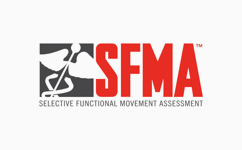“My child keeps complaining of a sore back when caring their school bag.” How can I ensure they have the correct set up to avoid back pain?
School back packs come in all different shapes, fabrics, styles and sizes. When used properly they can be super handy. We have put together some simple tips to help avoid the ‘sore back complaint’.
Backpacks are extremely useful for lugging around heavy books, lunches, school supplier and other personal items, but when we add them all together – it gets heavy! Its recommended that kids should carry no more then a maximum of 20% of their body weight on their back – but we get that sometimes this isn’t possible.
Having a backpack that is too heavy and doesn’t fit well puts a huge amount of stress on the spine. How? The weight of the back pulls the upper torso backwards. This in turn causes an over compensation to bend forward at the hips or arch the back and crunch the spine to stay stable and ‘upright’. These unnatural position cause extra strain on the shoulder, back and neck – generally causing pain.
And then when you add a ‘one shoulder hang’ – as many do, because it looks cool and feels easy – it ends up putting extra weight on one side putting the body rain in and even more unnatural position causing compensations and overload. And this is when you hear the well known phrase ‘my back hurts, my shoulders kill or I have a sore neck’.
So, to help our kids avoid these improper/bad backpack postures and reduce the risk of pain, injury and compensations follow these key tips to pick the right backpack and ensure it fits well.
- Choose the ‘right size’ – The backpack should be no wider than a students chest. Its height should extend 2 inches below the shoulder to waist level (or just above).
- Broad padded and adjustable straps – allow for an even weight distribution, comfort and reduced pressure on shoulders. The straps should be even in length and tightened so the backpack is sitting just above the waist (not on the bottom) and the thick pads should sit on the shoulders. *
- Pockets and compartments are the way to go – This allows weight to be distributed evenly in the backpack. Heavier items should go closer to the back (persons body).
- Test before you buy – take some items with you when purchasing to get an idea of the backpacks feel and weight distribution.
- Finally – remember not to carry too much where possible of course. A Maximum of 20% of child’s body weight is recommended before it really Strats to stain the body.
- A note on adjusting straps:
- Chest strap: Height should be where is most comfortable it should be adjusted to bring shoulder straps inwards so arms can move freely.
- Hip belt – should wrap around child’s hips (not bottom) to keep bag close to child’s back.
Correct posture for caring a school bag:
- Bottom of school bag should be at or just above waist line so the main bulk of the bad is over the strong mid back muscles.
- Clip waist straps (and chest straps if available) up to keep school bag as close to back as possible.
- When caring DO NOT lean forward or backwards try to maintain a straight back with school bag close to body. (Too to know where straight is – Place a book on your head and walk 20 steps without to falling off to get a feel of where ‘straight’ is).
- Carry bag on BOTH shoulders, don’t hang it off one shoulder as this can bend the spike sideways and cause one sided (asymmetric) weight distribution and further problems.











